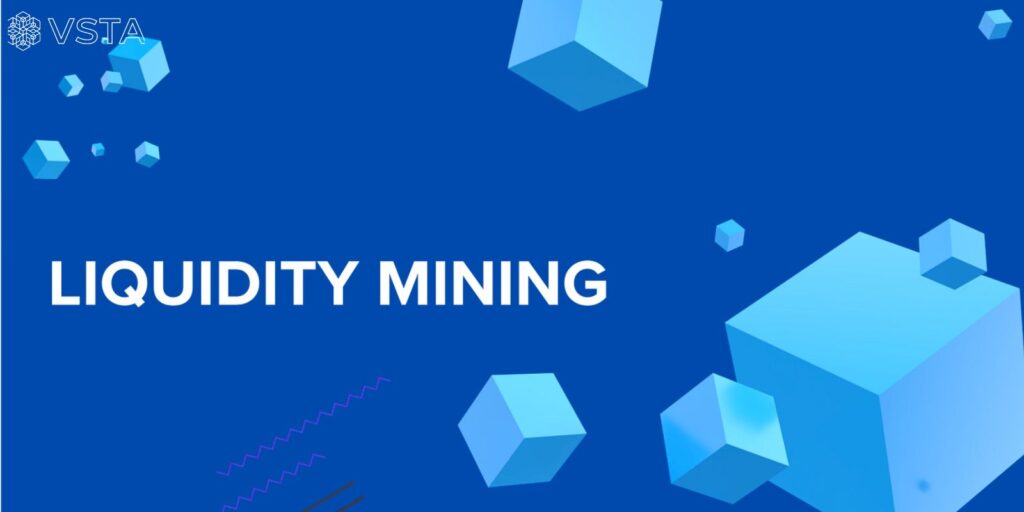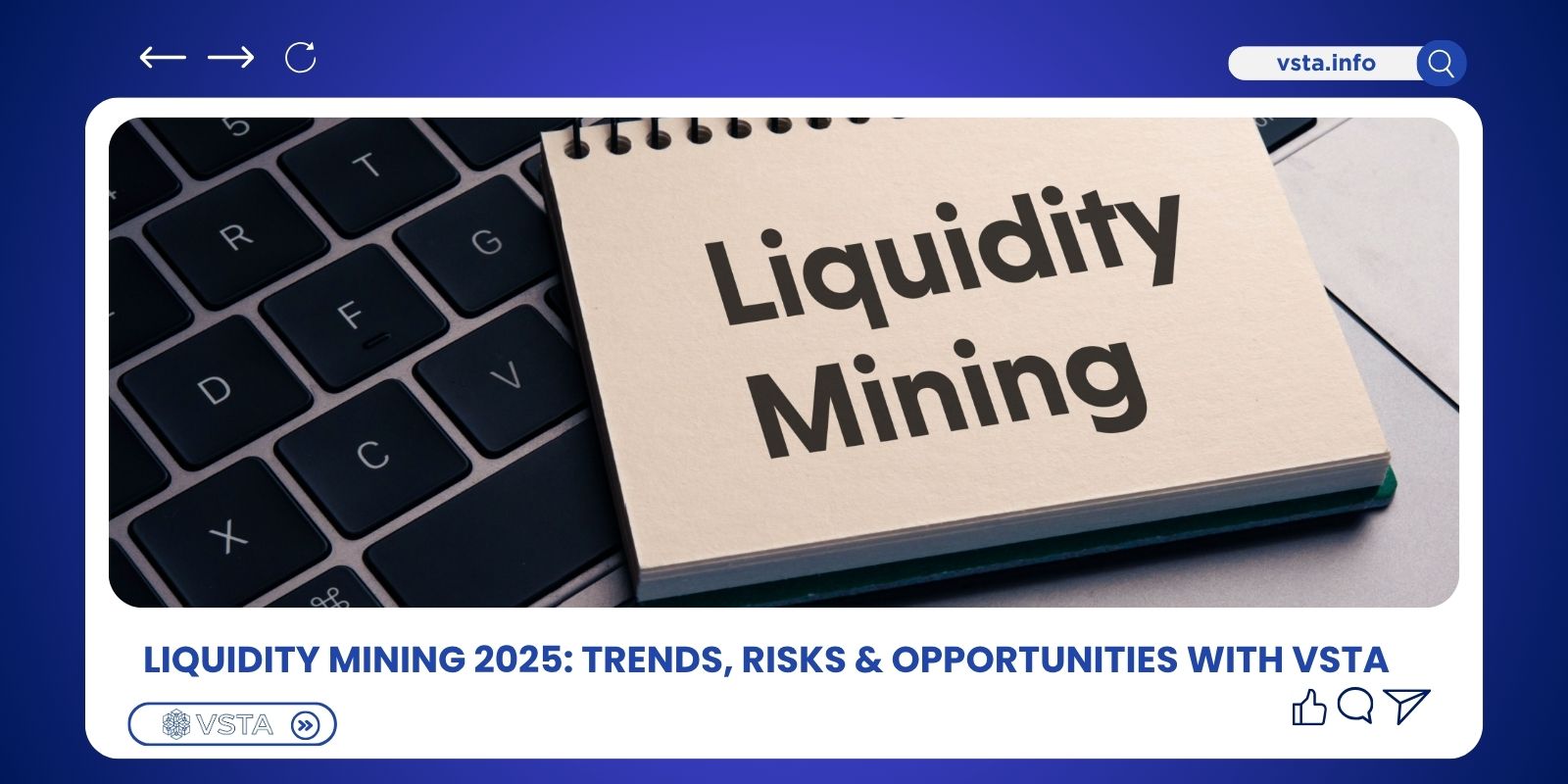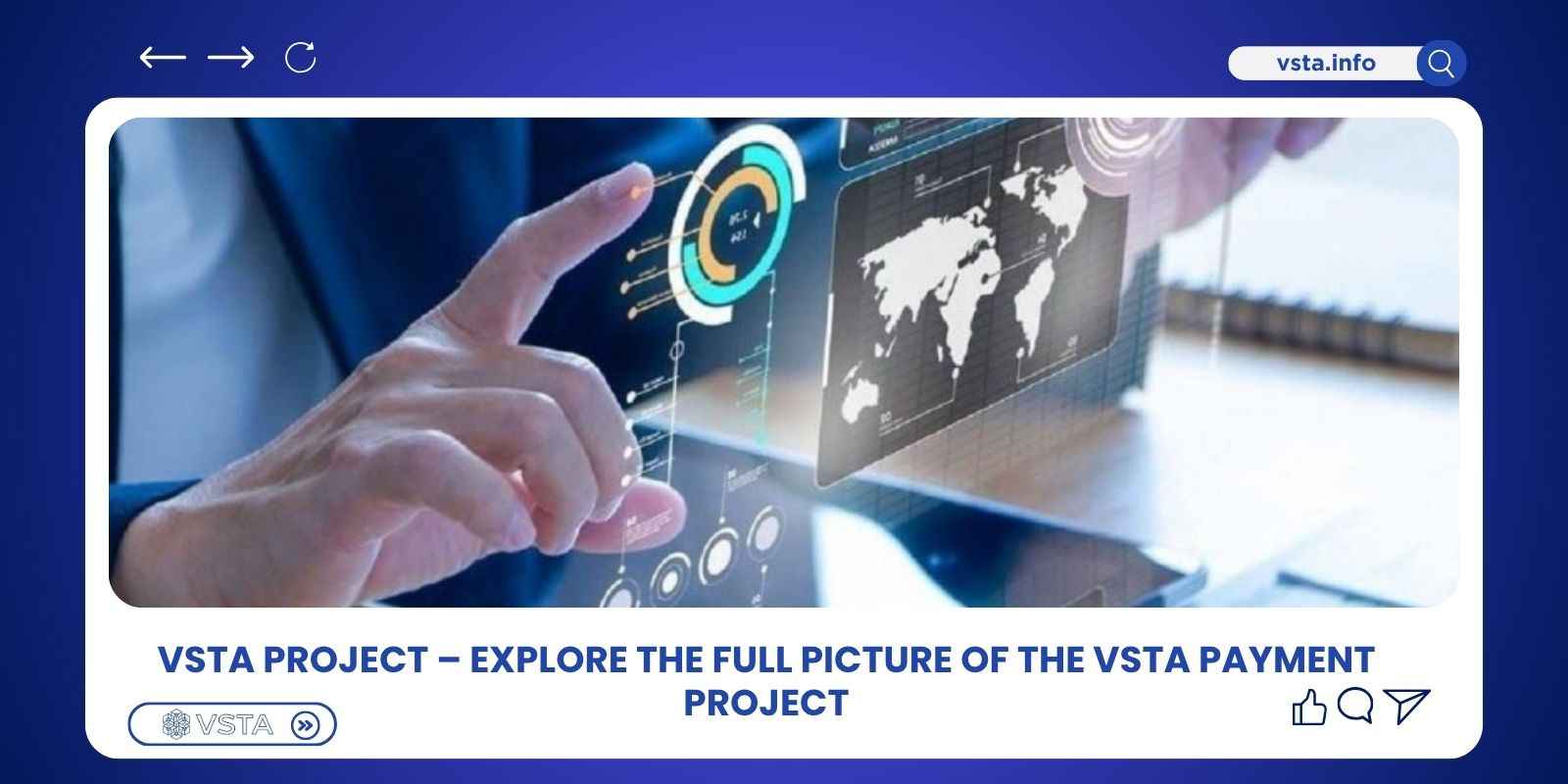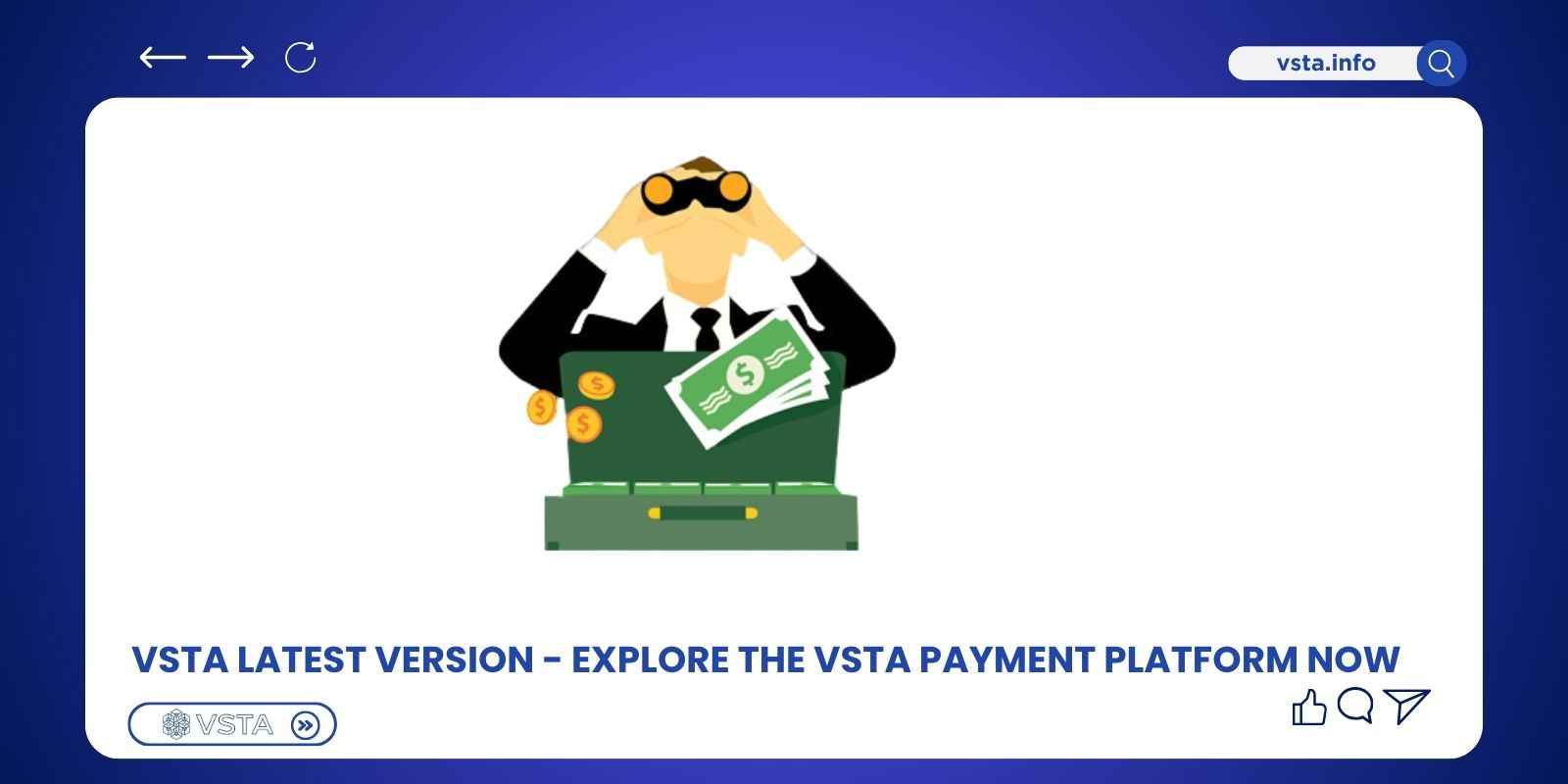In the world of decentralized finance (DeFi), Liquidity Mining can be simply understood as users providing liquidity to protocols in exchange for rewards, usually trading fees or project tokens. This was once a booming strategy that helped many DeFi platforms grow rapidly while creating passive income streams for investors. Back in 2020, Liquidity Mining was the main driving force behind the DeFi Summer-but will it still be attractive in 2025? Let’s dive into the detailed analysis in the article below from VSTA.Info!
What is Liquidity Mining?
Liquidity Mining is an important concept in decentralized finance (DeFi). It refers to the process where users provide liquidity to decentralized exchanges (DEXs) or lending protocols in return for rewards.
Liquidity Mining works under the following mechanism:
- Users deposit assets (tokens) into a Liquidity Pool on Automated Market Makers (AMMs) such as Uniswap, Curve, or SushiSwap.
- In return, they receive LP Tokens representing their share of the liquidity provided.
- These LP Tokens can be staked in other contracts to earn additional rewards (double yield).
Liquidity Mining became the backbone of DeFi Summer 2020, when Compound pioneered the trend of distributing COMP tokens as incentives for participants. This triggered an influx of tens of billions of dollars into the market.
The most significant role of Liquidity Mining is attracting liquidity, building communities, and kick-starting DeFi ecosystems, enabling projects to gain enough market depth to stay competitive. At the same time, it provides investors with an appealing channel for generating passive income.

Liquidity Mining Trends in 2025
Entering 2025, Liquidity Mining has shifted away from the early model of “infinite rewards” toward sustainable liquidity instead of reward inflation. Rather than endlessly minting tokens to incentivize users, many projects are now adopting the Protocol Owned Liquidity (POL) model. This approach means that the protocol itself holds and controls liquidity, reducing the risks of “farm & dump” behavior.
Another notable trend is the combination of Liquidity Mining and Liquid Staking (LSDfi), allowing investors to stake tokens (such as ETH) while simultaneously providing liquidity to earn double rewards. In parallel, AI-powered Yield Aggregators are becoming more advanced, optimizing farming strategies and automatically allocating capital into pools that generate the highest returns.
In the case of VSTA (Vesta Finance), this serves as clear evidence of the need to adapt Liquidity Mining models. Instead of relying entirely on token emissions, VSTA is focusing on balancing liquidity for its stablecoin VST while maintaining the long-term value of its governance token, VSTA. This stands as a prime example of how Liquidity Mining in 2025 is evolving to survive and thrive in an increasingly competitive market.

Opportunities of Liquidity Mining with VSTA
Despite the risks involved, Liquidity Mining still offers many attractive opportunities for investors-especially when combined with VSTA (Vesta Finance).
Users can generate passive income through trading fees and VSTA token rewards, allowing them to optimize returns even in a volatile market.
Holding VSTA is not just about earning rewards; it also grants governance rights over the protocol. This enables investors to actively participate in shaping the direction and growth of the ecosystem.
Those who join Liquidity Mining early gain a stronger position within the Vesta Finance community, benefiting more from token distribution policies.
As the VST stablecoin expands and competes directly with other major stablecoins, deep liquidity and a strong community will further boost the value of VSTA. This transforms challenges into one of the most notable DeFi investment opportunities in 2025.

Potential Risks of Liquidity Mining
Alongside profit opportunities, Liquidity Mining also carries several risks that investors should carefully consider before participating.
Impermanent Loss
Impermanent loss is the most common risk, occurring when the prices of tokens in a pool fluctuate significantly. Liquidity providers (LPs) may end up with a lower value compared to simply holding the original tokens. For example, in a VST/ETH pool, if ETH’s price changes rapidly, LPs could face substantial losses.
Smart Contract Risks
Liquidity Mining relies on smart contracts, and a single security vulnerability can result in investors losing their entire funds. While major platforms are often audited, this risk is inherent in DeFi and can never be completely eliminated.

Farm & Dump Causing Reward Token Depreciation
When projects issue tokens as rewards, many “farmers” participate solely to claim tokens and immediately sell them on the market. This creates strong sell pressure on the reward token, driving its price down quickly. In the case of VSTA, rapid token distribution in the past has led to heavy sell pressure, negatively impacting the long-term value of the governance token.
Sell Pressure from Liquidity Providers
Beyond farm & dump behavior, mass withdrawals of liquidity by LPs can trigger a supply shock in the market, causing sharp price declines. For VSTA, sell pressure from LPs not only affects the governance token but also creates challenges for the VST stablecoin in maintaining investor confidence and stable liquidity.
Comparison traditional Liquidity Mining vs the New Model
| Criteria | Traditional Liquidity Mining (Classic LP Mining) | New Model – Protocol Owned Liquidity (POL) | VSTA Illustration |
| Mechanism | Users provide liquidity → receive LP tokens → stake to earn rewards (tokens + fees). | The protocol directly owns and controls liquidity. | VSTA previously applied LP mining for VST/ETH and VST/USDC pools. |
| Liquidity Source | Fully dependent on the community (LPs). | Protocol manages its own liquidity, reducing reliance on LPs. | VSTA is exploring ways to reduce short-term dependence on LPs. |
| Rewards | Rewards are heavily token-based → prone to inflation (e.g., COMP, UNI, VSTA). | Less reliant on token emissions, focusing on sustainable liquidity. | VSTA faced sell pressure when rewards were distributed too quickly. |
| Sustainability | Short-term, vulnerable to farm & dump. | Long-term stability, reduced volatility. | VSTA’s challenge: transition toward sustainable liquidity. |
| Advantages | Quickly attracts capital inflows, stimulates community participation. | Ensures stable liquidity, reduces token inflation, creates long-term value. | VSTA leveraged LP mining to bootstrap its ecosystem. |
| Drawbacks | Strong sell pressure, impermanent loss, liquidity disappears once rewards end. | Harder to implement initially, requires protocol-owned capital. | VSTA needs to adjust strategies to mitigate farm & dump. |
4 Tips for Investors in Liquidity Mining
To seize opportunities while minimizing risks in Liquidity Mining 2025, investors need a clear strategy:
- Understand the risks before farming: especially impermanent loss and the selling pressure from reward tokens like VSTA.
- Choose the right pool carefully: popular liquidity pairs such as VST/ETH or VST/USDC tend to be more stable and have higher trading volumes.
- Closely monitor VSTA’s token distribution policies: as these directly impact supply and the market value of the token.
- Diversify your yield farming strategies: combining multiple pools and approaches helps reduce risk while optimizing returns in the DeFi ecosystem.
Conclusion
As highlighted above, Liquidity Mining remains a key driver of DeFi, but in 2025 it will be a game for projects that know how to build sustainable liquidity with VSTA standing out as a noteworthy example. Opportunities and risks always go hand in hand in Liquidity Mining. Those who catch emerging trends, fully understand the risks, and choose the right projects like VSTA will be the winners in the DeFi era of 2025. So don’t hesitate start researching and crafting your own investment strategy today!



